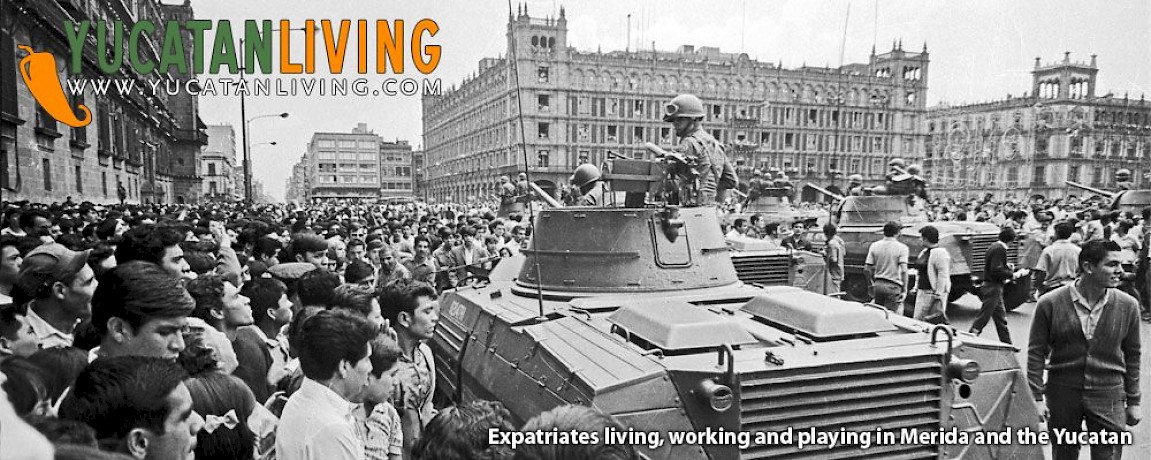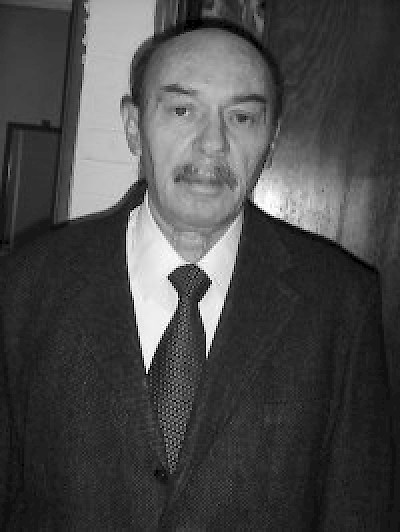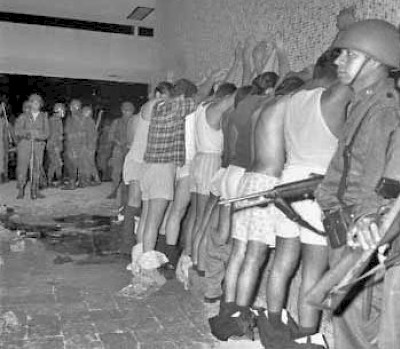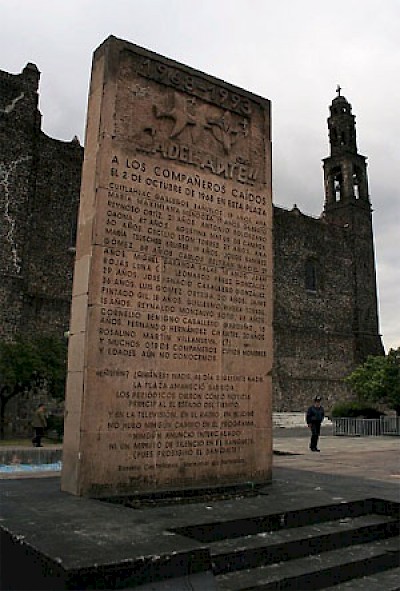Arturo Zama Escalante, Witness to History
Editor's Note: One of the things we love about Mexico is learning its history... we were taught so little of it in our schools North of the Border. And Mexico's history is full of drama, pathos, injustice and redemption. We like it even better when we find someone still alive who has a personal connection to that history and can tell us how it really was. In Yucatan, there are still a few people who remember the Mexican Revolution (not many...) and even more who remember stories of the Revolution as told by their parents and grandparents. Khaki Scott, our Events and News Coordinator, had a personal friendship with someone who figured significantly in one of Mexico’s most tragic events of the 20th century. The first anniversary of his death is approaching and Khaki shares her memories of this great man with us.
Arturo Zama Escalante
One year ago, on January 25, 2010, Arturo Zama Escalante, a Mexican hero, died of a sudden heart attack. He was only 64 years old.
Not a Very Good Year
1968 was not a good year for Planet Earth. World War II had been over for two decades but tension was running high around the world. It seemed as if not one single nation had learned its lesson from the horrors of world war, and the only thing that kept them from each other's throats was the threat of nuclear war. Even so, small, bloody and useless conflicts raged in every corner of the planet. All over the globe, young people, hurt and disappointed by the world they would soon inherit, flowed into the streets in protest. Governments, some fearful of change and others perpetrators of repression for their own political and financial gain, fought back against their own young people with a vengeance that set much of the world, including Mexico, on fire. It was in this environment that Arturo Zama Escalante came of age in Mexico City.
By 1968, Mexico had a growing middle class that was sending its children to college in record numbers. Like the students in many other nations of that era, they were taking classes in history, political science, sociology, philosophy, and law. The dawn of the Human Rights movement was being born in these students faster than anyone could imagine. From early in 1968, Mexican young people poured into the streets in support of human rights revolutions around the world. They inflamed the government by embracing Communism and Socialism. The government's response was to attempt to control the universities and vocational schools, including course content... but the genie was already out of the bottle. The students would not be controlled or suppressed and the struggle for their future was on. This set the stage for the tragedy that would take place on October 2, 1968.
Student Activist
Arturo Zama Escalante became politically active as a college student. By 1968, he was the leader of the CNED and a member of the Mexican Communist Youth movement. He was arrested with friends in Mexico City, on July 26, 1968, at Café Vienna, on Avenida Insurgentes, for having led a student demonstration in the Juarez Hemiciclo in support of the Cuban Revolution. He was transferred to prison the very next day.
The Infamous Tlatelolco Massacre
The infamous Student Massacre of 1968 took place two months and a few days later, on October 2, as students were peacefully meeting to protest the assault on the autonomy of their universities and secondary schools. They were also demonstrating for the freedom of their jailed classmates. With the 1968 Summer Olympics just 10 days away, they began to chant ¡No queremos olimpiadas, queremos revolución! ("We don't want Olympic games, we want revolution!"). As the military moved into the Plaza de las Tres Culturas in Tlatelolco, they were fired on. Believing the attack was coming from student snipers, they opened fire. The government claimed that no more than 28 students were killed. Students and other witnesses claimed that number may have been as high as 3,000. We will never know the exact number of young people that died that day.
The 1968 Summer Olympics went on with, by that time, only 40 documented deaths from the Student Massacre. Other nations would not have participated if the real cause of the massacre had been known. However, since the students were being blamed for shooting first, almost every other nation came to the games. With their world sinking into chaos, a number of Olympic athletes showed remarkable bravery by registering their feelings before the world. 1968 was the year of the Black Power salute, the Russian athlete who lowered her head and turned away during her national anthem, and others who wore civil rights badges and human rights badges on the podium and in the parade.
We would not learn the true story of how the Student Massacre of 1968 really began until President Vicente Fox conducted his own investigation in 2001, and made the findings public. That investigation revealed documents proving that the snipers were members of the Presidential Guard. They had been instructed to fire on the military below for the sole purpose of provoking them into attacking the students. Today, October 2 is a day of national mourning in Mexico.
Arturo Zama's Fate
Arturo Zama Escalante and the other jailed students remained imprisoned. They heard the massacre from inside the prison, but were helpless to stop it. Arturo's mother, Alicia Escalante de Zama, a Mexican hero in her own right, was instrumental over the next few years in bringing Amnesty International to Mexico in an effort to secure the release of her son and his comrades.
Originally sentenced to ten years in prison, Arturo ultimately served three years in the notorious Lecumberri Prison, with three more years of exile in Canada. During their years in Lecumberri, he and his fellow student prisoners were able to get textbooks into the prison and took turns teaching the group so they could complete their educations. The course Arturo taught his classmates was English, the same subject he was teaching to another group of college students on the morning of his fatal heart attack a year ago.
Forever Changed
When we encounter terrible injustices, we have a choice. We can turn away and allow injustice to continue, or we can become part of the solution. After returning to Mexico from exile in Canada, Arturo Zama Escalante served Mexico as an attorney in a variety of settings, including in the Superior Court of Justice. He also served as chairman of Amnesty International in Mexico, as a professor at UNAM and the Universidad Autonoma de Sinaloa, and participated for several years on the National Council to Prevent Discrimination (CONAPRED). His additional professional accomplishments are too numerous to list.
As the years wore on, Arturo Zama Escalante lived his remarkable life almost completely behind the scenes. Everyone who knew him urged him to write about his experiences, but he would just smile and decline. On the 40th anniversary of the horrible event at Tlatelolco, 40,000 people marched in the streets of Mexico City, but Arturo almost skipped the 40th reunion of those who were arrested with him that fateful summer. Thank goodness, he was finally persuaded to attend, where he was surprised by his friends' invitation for him to come on the stage. The events of that night, including the ovation he received, gave him a memory that he cherished for the rest of his life.
The Man, The Friend
Mexico lost much when Arturo Zama Escalante died, and I lost one of my oldest and dearest friends. His political beliefs never wavered. He was a socialist who had allegiance to no political party. All he ever wanted was for all governments to simply do the right thing for their people. What that earned him was the love and respect of communists, socialists, and capitalists around the world. The same was true on the topic of religion. He would tell you that he didn't even believe in religion and then behave as a living example of the Sermon on the Mount. His personal code of ethics was above reproach, but that didn't mean he couldn't be charmingly irreverent at times. He was quiet and shy, but had mastered the art of making people laugh when they least expected it. He loved art and music and travel. He loved mountains covered in winter snow or spring flowers and was fascinated by ice country. He loved the great cathedrals and marvelous train stations in Europe, and adored the beach at Loreto, Baja California Sur. …and he loved flowers – all kinds of flowers, but he especially loved roses. He loved his family and friends with all his heart, worshiped his children, and was ever the champion of the poor and disenfranchised.
I read somewhere that we should consider ourselves lucky if we have known someone who is so hard to say goodbye to. Unfortunately, that realization doesn't make it any easier for those who are left behind to go through each day without the wit and wisdom of our friend. Perhaps I shall reach acceptance by the next anniversary of the death of this Mexican hero but, with only one year gone since he left us, I still just miss my friend.
****
Read more about the Tlatelolco Massacre here on Wikipedia
A documentary made about the Tlatelolco Massacre











Comments
Jacynthe 13 years ago
J'ai correspondu avec Arturo pendant des années et ce, sans véritablement savoir qui il était ou plutôt ce qu'il avait été . Il était très humble et discret dans ses écrits.
Depuis presque une année, je tentais de reprendre contact avec lui mais cela demeurait sans réponse et là ...J'ai eu ma réponse en cherchant sur internet et en apprenant qu'il était décédé. Je m'apprêtais à lui annoncer que je passerais par Mexico prochainement et que j'aimerais le rencontrer.
J'aurais vraiment aimé le connaître en personne et je découvre juste maintenant quel homme exceptionnel il a été dans son milieu et dans son pays. Je n'aurai jamais eu la chance de le croiser et c'est une grande tristesse pour moi.
Jacynthe Collard, Québec, P. Québec, Canada
Google Translation:
I corresponded with Arturo for years, without really knowing who he was, or rather it was. He was very humble and discreet in his writings.
For almost a year, I tried to reconnect with him, but it remained unanswered and there ... I got my answer by searching on the internet and learned that he had died. I was about to tell him that I would go through Mexico soon and I'd like to meet.
I really enjoyed knowing him and I just now discovered what an exceptional man he was in the community and his country. I never had the chance to meet him and it is a great sadness to me.
Jacynthe Collard, Quebec P. Québec, Canada
Reply
Mario Zama Escalante 14 years ago
Thank you all, my brother's friends, for keeping the best moments of his life in memory.
And may his beliefs remain alive for eternity.
Reply
CasiYucateco 14 years ago
Sr. Herrera: Thank you for sharing your knowledge with us. And thank you for your service to the US and to Mexico. I think you must have many favorite memories to share with us. Perhaps the Working Gringos will some day do an interview with you so we can all learn more about your life and memories.
Arturo Zama Escalante won't be forgotten, nor will you, if we all learn your stories and then pass them on to the future generations. We must learn the lessons of history, or we are bound to repeat the mistakes of the past.
How do you feel about today? Have we (the US and Mexico) made progress from the days of your younger years? How did the Mexican people cope with the social upheavals of the 1900s? Personally, I am hungry to know more about you.
Reply
Jose A Herrera 14 years ago
Arturo Zama Escalante will probably be forgotten in the pages of Mexican History...as so many outstanding young men who, in 1968, took part on that sudden protest and uprising at Santiago Tlatelolco Plaza De las Tres Culturas. I am now a retired resident of Merida and remember a variety of historical events related to the tumultuous social upheavals throughout Mexico's development as a modern nation. I lived in Guadalajara when, March 18th 1938, President Lazaro Cardenas decided to take over the Petroleum industry from foreign ownership. The whole country went into a military alert afraid the U.S. may use their military might to strike by air and bomb the existing oil fields. I lived in Chicago when in 1957 and 1958 we used to organize dances at the Ashland Auditorium to collect funds to support Fidel Castro's Cuban Revolution at the Sierra Maestra in Cuba. I am now an eighty years old man who have witnessed the social struggles of this great country of Mexico and other Latin American Nations. I am also very proud to have served honorably in the United States Air Force as a crew member in a B50 Bomber during the Korean War- Honorably Discharged in 1954 as a S/Sgt.
Reply
Peter de la Cour 14 years ago
Hi
I always read your articles with great interest. This one, like all of them, is superb - very interesting for someone like me who is a Merida resident, but not terribly knowledgeable about Mexican history. Well done! Keep it rolling on!
I'm in England at present. Here I listen a lot to Radio BBC, without a doubt the best radio in the world. I wanted mainly to draw your attention to a very interesting programme I listened to a few days ago on The Mexican Revolution on Radio 4. Of course, you don't need to listen to a program on The Mexican Revolution since I'm sure you're well informed on this topic. But take a brief listen to the beginning of the program nevertheless. Also, the reading list supplied is very impressive I think.
Here's the link to listen to the programme. You may have to install the free BBC iplayer
http://www.bbc.co.uk/programmes/b00xhz8d
Melvyn Bragg and his guests discuss the Mexican Revolution.
In 1908 the President of Mexico, Porfirio Diaz, gave an interview to an American journalist. He was 77 and had ruled the country in autocratic fashion for over thirty years. He discussed the country's economic development and spoke of his intention to retire to his country estate after overseeing a transition to multiparty democracy.
Things did not turn out quite like that. Two years later Diaz was toppled by a popular uprising. It was the beginning of a tumultuous decade in which different factions fought for supremacy, and power changed hands many times. The conflict completely changed the face of the country, and resulted in the emergence of Mexico's most celebrated folk hero: Emiliano Zapata.
FURTHER READING
B. Hamnett, ‘A Concise History of Mexico’ (CUP, Cambridge, 1999)
L. Meyer & H. Aguilar, ‘In the Shadow of the Mexican Revolution: Contemporary Mexican History 1910-89’ (Austin, Texas, 1993)
S. Brunk, ‘Emiliano Zapata!: Revolution and Betrayal in Mexico’ (University of New Mexico Press, 1995)
S. Brunk, ‘The Posthumous Career of Emiliano Zapata: Myth, Memory, and Mexico’s Twentieth Century’ (University of Texas Press, 2008)
P. Garner, ‘Porfirio DÃaz’ (Longman, Harlow, 2001)
J. Hart, ‘Revolutionary Mexico: The Coming and Process of the Mexican Revolution’ (Stanford, 1987)
A. Knight, ‘The Mexican Revolution’ (CUP, Cambridge, 2 vols., 1986)
T. Benjamin, ‘La Revolución: Mexico’s Great Revolution as Memory, Myth and History’ (Austin, Texas, 2000)
J. Brown, ‘Oil and Revolution in Mexico’ (Berkeley CA, 1993)
F. Katz, ‘The Life and Times of Pancho Villa’ (Stanford, 1998)
J. Womak, ‘Zapata and the Mexican Revolution’ (Thames and Hudson, London, 1968)
A. Warman, ‘We Come to Object: The Peasants of Morelos and the National State’ (The John Hopkins University Press, 1980)
Stephanie Mitchell & Patience A. Schell (eds.), ‘The Women’s Revolution in Mexico, 1910-1953’ (Rowman & Littlefield, 2006)
Jocelyn Olcott, Mary Kay Vaughan and Gabriela Cano (eds.), ‘Sex in Revolution: Gender, Politics, and Power in Modern Mexico’ (Duke University Press, 2006)
Matthew Butler, ‘Popular Piety and Political Identity in Mexico’s Cristero Rebellion’ (OUP, 2004)
M. Werner (ed.), ‘Encyclopaedia of Mexico: History, Society, Culture’ (Fitzroy Dearborn, Chicago, 2 vols., 1997)
.
Reply
paul lawrence 14 years ago
A wonderfully informative & moving article, thank you khaki.
Reply
Karen Ferguson 14 years ago
Thank you, Khaki, for sharing this story with us. It's not in the history books yet....and should be.
Very poignant and I was touched deeply.
Just finished watching "The Girl in the Cafe" and was reminded, one more time, how one person can make a huge difference.
Abraso,
Karen
Reply
Toni Lindsay/TwoTexans 14 years ago
Wow! This beautifully written article should be published in every newspaper in Mexico. You are indeed fortunate to be able to call Arturo Escalante friend.
Reply
(0 to 8 comments)